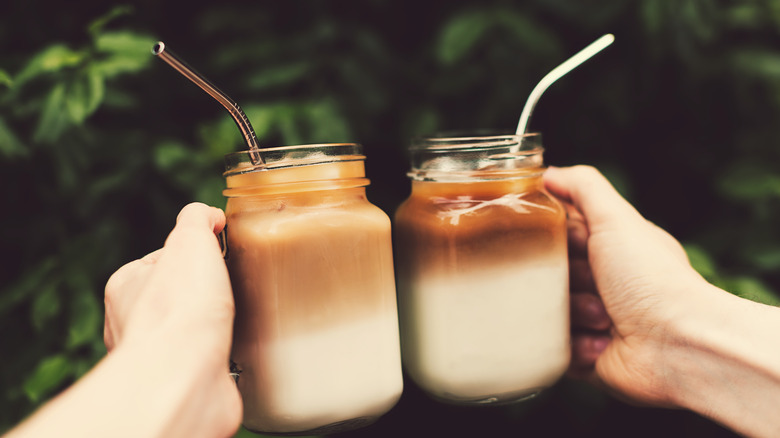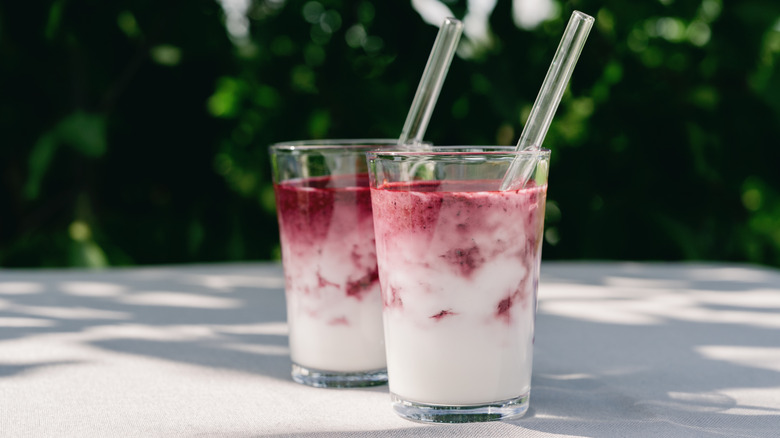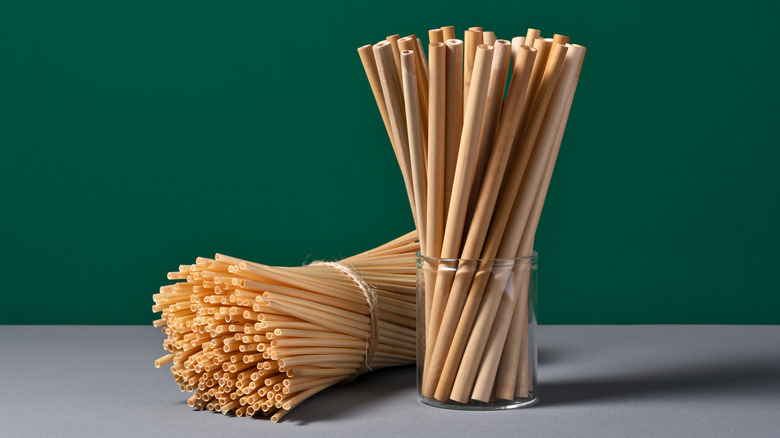Your Reusable Straws Are Probably Nasty If You're Not Doing This
We may receive a commission on purchases made from links.
Straws have become a complicated topic in recent years. The European Union banned single-use plastic straws in 2021, California only gives them out on request, and former president Joe Biden began a plan to phase them out completely in 2024 (which has since been halted by the current administration).
For anyone trying to reduce their reliance on single-use plastics, a common alternative is a reusable drinking straw. These are often made of rigid plastic, silicon, metal, or glass — and they're great. You never run out, you don't need to have stacks of boxes in your pantry, you don't need to rebuy them all the time, and you don't need to feel bad about plastic waste.
However, your reusable straws are probably on their way to the trash if you're not regularly rinsing them out. It's a bit of a pain, but throwing reusable straws in the dishwasher just isn't enough to keep them clean and hygienic. Bacteria builds up inside the straws where the dishwasher can't reach. Over time, your straws will start to smell and eventually become unusable. For plastic and silicon straws, this is often a one way ticket since their porous nature lets in food particles which leads to permanent odor retention and stains. For glass and metal straws, however, you should be able to save them with a deep clean combined with a new, regular cleaning routine.
Tips for keeping reusable straws clean
If you want to keep your straws as clean as possible, the first thing to think about is buying the right type. There are pros and cons to each material, but for the purpose of cleaning, transparent glass straws are the best. Glass is long-lasting and resistant to stains, making it easier to remove build-up and bacteria. The transparency is important too since you'll be able to see any residue inside. This makes it easier to tell when the straws are in need of a deep clean. It also makes it easier to tell when you've properly finished the job. If you don't like glass, stainless steel straws are also fairly easy to maintain.
As for how to deep clean reusable straws, the most important tool is a pipe cleaner (or straw-cleaner brush). Many packs of reusable straws actually come with a pipe cleaner, so you might already have one hiding somewhere. This tool, plus some warm soapy water, is all you need to thoroughly clean these straws — treat it the same as washing the dishes. The important thing is to develop a habit of rinsing the straws directly after use. This allows you to wash away residue before it dries and sticks to the straw. Other strategies you can try include sterilizing the straws with boiling water, disinfecting them with a vinegar soak, and dissolving stubborn residue with denture tablets.
Alternatives to reusable straws
If all of this sounds like too much bother, I don't blame you. Washing 10 to 20 reusable straws every couple days can get pretty annoying and time-consuming, especially if you use a dishwasher to clean your kitchenware. I won't lie, when I used reusable straws, I'd get lazy and refuse to wash them until I had completely run out of clean ones. Not ideal, to say the least.
There are other options which don't involve plastic (such as paper straws), but it's hard to sincerely recommend those soggy nuisances. People hate paper straws so much that some companies like McDonald's have started testing straw-less drinks in the hope of avoiding paper.
Disposable bamboo fiber straws, on the other hand, are a totally viable alternative. They're biodegradable and they don't get soggy for several hours. I personally switched to these about a year ago after getting tired of cleaning straws by hand and I think they're great.


